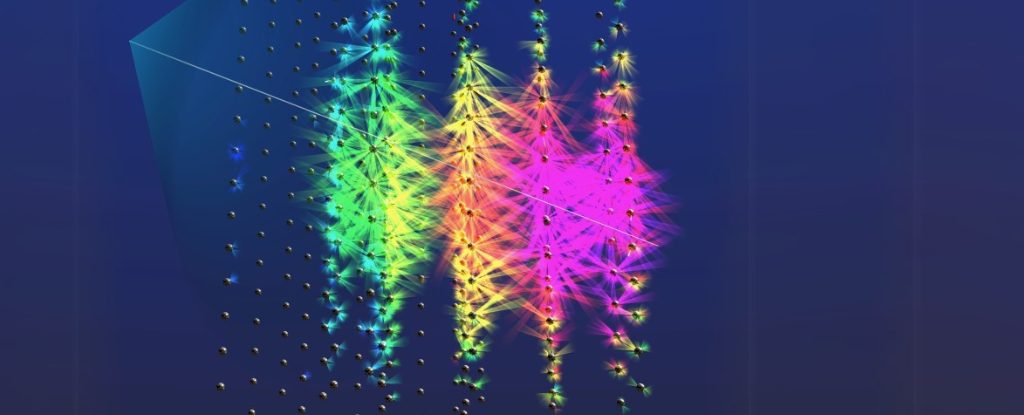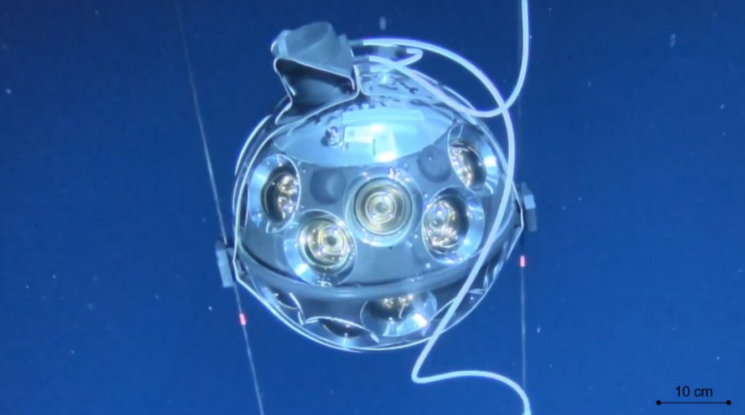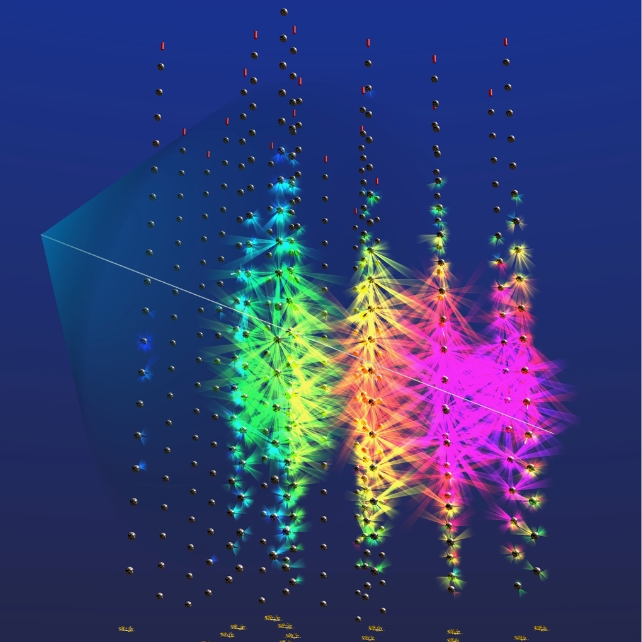
Earth is continuously bombarded by high-energy particles from space, and scientists have recently made an astonishing discovery: a neutrino originating from deep space, exhibiting unprecedented energy levels.
On February 13, 2023, an underwater detector near Sicily recorded this groundbreaking neutrino event, estimated to possess an incredible energy of 220 petaelectronvolts (PeV). To put this in perspective, the previous record was only 10 PeV that pale in comparison.
A limited number of celestial phenomena can produce such extreme energy levels, including supernovae and black holes. One likely source could be a blazar, a particularly energetic supermassive black hole that emits radiation almost directly toward Earth.
However, due to the extraordinary energy of this neutrino, it may also represent the first detected cosmogenic neutrino, indicating that it originated from the interaction of cosmic rays with photons from the leftover radiation of the Big Bang.
Neutrinos are fundamental particles that are electrically neutral and possess a minuscule mass, once thought to be nonexistent. Each second, billions of these particles pass through our bodies, but due to their minimal interaction with matter, we remain unaware of their presence.
This lack of interaction makes neutrinos challenging to detect. Observing them involves gathering a substantial volume of a medium such as ice or water and monitoring it with thousands of sensitive detectors for the characteristic flashes of light produced by neutrino interactions.
The groundbreaking neutrino was spotted by one of the two Cubic Kilometer Neutrino Telescope (KM3NeT) arrays, located 3,450 meters (11,320 feet) beneath the Mediterranean Sea. Each of the 378 modules in this array contains 31 light-sensitive detectors aimed at capturing the elusive flashes generated by neutrinos.

During this historic event, over 28,000 photons were detected as particles generated by the neutrino raced through the detector. The particle entered almost horizontally, suggesting it traversed significant amounts of rock and water in the Earth’s crust before colliding with an atom within KM3NeT’s range.
The light observed was produced by another elementary particle known as a muon, created during the interactions triggered by the neutrino. This muon was calculated to have an impressive energy of around 120 PeV, which is remarkably high for a muon but still insignificant compared to the energy of the original neutrino.
What could produce a neutrino with such extraordinary energy? Due to their limited interaction with matter, neutrinos can journey vast distances without deflection, complicating attempts to pinpoint their source.

The researchers examined four potential sources in the region of the sky from which the neutrino was detected. The possibilities included an object within our galaxy, one outside it but still in the local universe, a transient event like a gamma-ray burst, or a source from a distant galaxy.
After investigation, none of the first three options matched the findings. This narrowed the possibilities to extragalactic sources, with active supermassive black holes being prime contenders. Given the exceptional energy of the neutrino, it likely came from a highly active source such as a blazar.
The researchers proceeded to analyze that section of the sky across various wavelengths to pinpoint potential blazars responsible for the phenomenon. They identified a list of 12 candidates, but the investigation remains ongoing.
With a large number of blazars in the universe, the authors assert that none of the associations can be considered conclusive at this stage, necessitating further research as mentioned in a recent study.
Another intriguing possibility involves the cosmogenic production of neutrinos. This theory suggests that these high-energy particles could arise from cosmic rays interacting with the cosmic microwave background – the residual radiation from the Big Bang or the light existing between galaxies.
If validated, this would signify the first observation of a neutrino generated in this manner. Additional studies will be essential to unravel this cosmic mystery.
The findings were published in the journal Nature.









